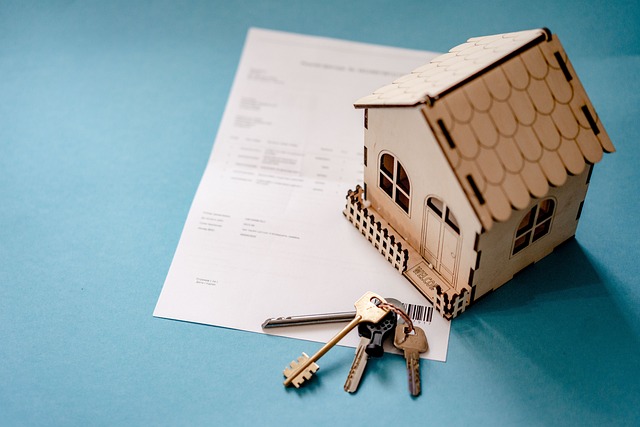The Address Occupant Lookup service is an indispensable tool for a variety of sectors including real estate, marketing, and background checks, enhancing targeted direct mail, property management, and tenant screenings. It works by merging public records, databases, and real-time data sources to provide accurate occupancy information while upholding privacy standards. Its applications extend beyond initial uses into fraud prevention, credit scoring, and legal compliance, making it a staple in data-driven industries. The effectiveness of this service hinges on the integrity of its data sources and the sophistication of its algorithms. Users must carefully assess these elements to ensure precise and reliable outcomes. Advanced technologies are being integrated to refine the service, with sophisticated algorithms cross-referencing multiple data sources in real-time to minimize false positives, machine learning models improving accuracy over time, and geospatial mapping offering visual insights into occupancy patterns. Predictive analytics adds value by forecasting future trends based on historical and demographic data. It is crucial to conduct all these operations ethically and securely, in strict adherence to privacy laws like GDPR and CCPA, to maintain trust and legal compliance. By combining these advanced techniques with best practices in data management, the Address Occupant Lookup service can significantly improve its efficiency and reliability for businesses across various industries.
Navigating the complexities of property management often necessitates precise identification of address occupants. This article delves into the intricacies of Address Occupant Lookup, a critical process in various sectors including real estate, legal, and marketing. We will explore key concepts, practical applications, and advanced techniques that enhance lookup efficiency. By understanding the nuances of this practice, professionals can streamline their operations, comply with regulations, and foster better engagement with occupants. Join us as we dissect the best practices for conducting an effective Address Occupant Lookup, ensuring your data acquisition is both accurate and compliant.
- Understanding Address Occupant Lookup: Key Concepts and Applications
- Best Practices for Conducting an Effective Address Occupant Lookup
- Advanced Techniques and Tools for Enhancing Address Occupant Lookup Efficiency
Understanding Address Occupant Lookup: Key Concepts and Applications

Understanding Address Occupant Lookup involves a comprehensive grasp of its core components and practical uses. At its essence, Address Occupant Lookup is a data retrieval process that provides information about individuals or entities residing at a specific address. This process is invaluable across various sectors, including real estate, marketing, skip tracing, and background checks. Professionals leveraging this tool can accurately identify occupants, which is crucial for targeted direct mail campaigns, property management efficiency, and due diligence in tenant screening or verifications. The mechanism behind Address Occupant Lookup integrates public records, databases, and real-time data sources to cross-reference information and deliver reliable results. This multi-faceted approach ensures a high degree of accuracy, making it a reliable method for obtaining up-to-date occupancy details without compromising privacy. Additionally, the applications of Address Occupant Lookup extend beyond traditional use cases; it is increasingly being employed in fraud prevention, credit scoring, and for compliance with legal and regulatory requirements, underscoring its versatility and importance in modern data-driven operations. Users seeking to harness the power of Address Occupant Lookup should consider the reliability of the data sources and the quality of the algorithms employed, as these factors significantly influence the effectiveness of the lookup process.
Best Practices for Conducting an Effective Address Occupant Lookup

Conducting an effective Address Occupant Lookup is a critical task for various industries, including property management, market research, and direct marketing. To ensure accuracy and compliance with privacy laws, it’s imperative to follow best practices throughout the process. Begin by verifying the validity of the address through trusted databases that provide real-time updates on residential statuses. This step minimizes the risk of looking up occupants at addresses that have been vacant or are otherwise incorrect. Utilize multi-source verification to cross-reference information, which enhances confidence in the data collected.
When engaging in an Address Occupant Lookup, it’s crucial to employ secure and ethical methods. Accessing publicly available records, such as voter registration lists or driver’s license databases, can be legal but should be done with a clear understanding of the permissions and restrictions associated with these data sources. Privacy considerations must always be at the forefront; ensure that you are authorized to access this information and that it is being used in accordance with relevant laws and regulations, such as the General Data Protection Regulation (GDPR) for European data or the California Consumer Privacy Act (CCPA) for data originating from California. Adhering to these best practices not only facilitates legal and ethical data collection but also builds trust between your business and the occupants you are researching.
Advanced Techniques and Tools for Enhancing Address Occupant Lookup Efficiency

In the realm of address occupant lookup, the integration of advanced techniques and tools is paramount for enhancing efficiency. Utilizing sophisticated algorithms, modern lookup services can swiftly sift through vast databases to provide accurate occupant information with a high degree of precision. These algorithms are designed to minimize false positives by cross-referencing multiple data sources in real-time, ensuring that the results returned correspond to the correct individuals associated with a given address. Additionally, the incorporation of machine learning models allows these systems to continuously improve their accuracy over time based on user feedback and interactions. This adaptive approach not only streamlines the lookup process but also maintains the integrity of the data by self-correcting inaccuracies, thereby providing stakeholders with reliable occupant information for a multitude of applications, from tenant verification to background checks.
For organizations heavily reliant on address occupant lookup, leveraging cutting-edge tools like geospatial mapping and predictive analytics can further optimize search outcomes. Geospatial technology enables visualization of data on a map, which can help in identifying patterns and anomalies in occupancy that might not be apparent through traditional text-based searches. Predictive analytics, on the other hand, can forecast potential changes in occupancy by analyzing historical trends and demographic data, thereby preparing businesses to respond proactively to shifts in population or housing developments. By combining these advanced techniques with robust data management practices, entities can significantly elevate their address occupant lookup capabilities, ensuring a more efficient and reliable process for obtaining occupant information.
In wrapping up our exploration of Address Occupant Lookup (AOL), it’s clear that this process is a critical component in various sectors, from real estate and property management to marketing and law enforcement. The insights provided in understanding the key concepts and applications of AOL have underscored its importance in obtaining accurate occupancy information. By adhering to the best practices outlined for conducting an effective AOL, individuals and organizations can streamline their operations and enhance decision-making processes. Furthermore, leveraging advanced techniques and tools has proven to significantly improve the efficiency and reliability of address occupant data retrieval. As such, Address Occupant Lookup stands as an indispensable tool in navigating the complexities associated with verifying residential and commercial occupancy details.



